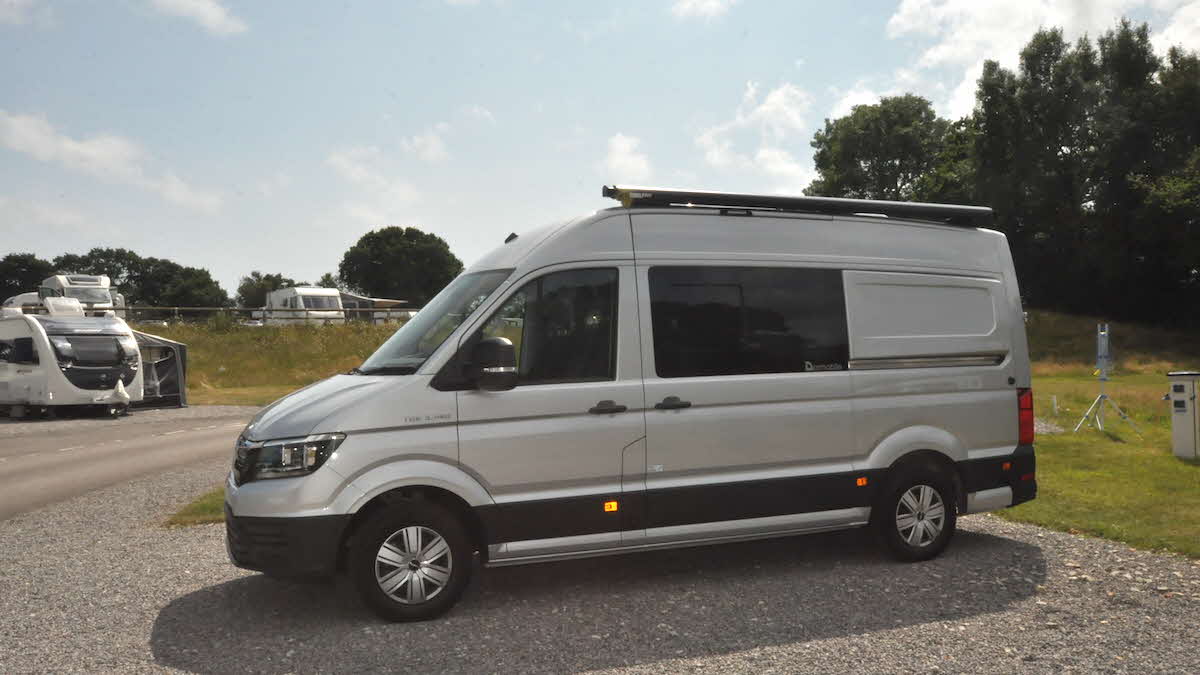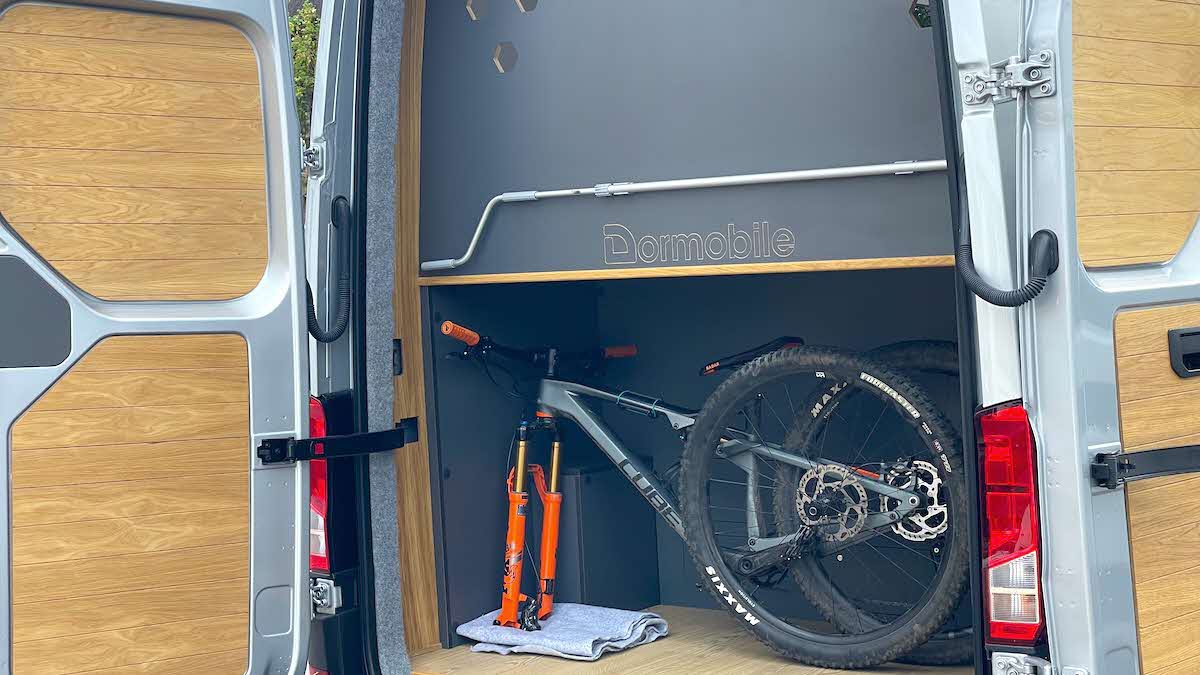New and used
Browse for bargains from thousands of new and used vehicles for sale, or sell your caravan, motorhome, towcar or accessories.
Buy and sell nowNick Harding checks out a new vehicle from a very famous name
Welcome back, Dormobile. The name synonymous with motorhomes since their very inception is undergoing something of a renaissance, producing all-new campervans and restoring classics from its past. As well as new vehicles based on Ford’s Transit, Volkswagen’s Transporter and Peugeot’s Boxer, Dormobile has launched the ‘Ohana’, using MAN’s TGE van.
There are two versions. Ohana 1 will have an elevating roof, complete with shower and toilet facilities, while the Ohana 2 we’re looking at here is a high-top that takes more of a campervan approach in terms of its layout and specification.
Ohana 2 comes with five belted travel seats, with sleeping accommodation in the form of two double beds (more later) and the option of a cab bunk (not fitted on this test model).
It offers campervan-type facilities in a spacious, high-roof van conversion and a floorplan that’s very different from more mainstream offerings. Prices start at £80,500, but among the options fitted here are a rather pricey automatic transmission (£3,000) and an LED headlights upgrade (£1,272).

Few will doubt MAN’s pedigree as a builder of quality vehicles. We are looking at the TGE 3.140 variant here, featuring a 140bhp engine and eight-speed automatic transmission that should give sufficient oomph and relaxed driving in pretty much equal quantities. It’s a larger-than-average base vehicle (note the added ‘flares’ for extra width at bed level) and the 2.6m-long Fiamma F80 awning is standard (as will be alloy wheels on future models).
Although Dormobile is responsible for the design, the actual conversion work on the Ohanas is contracted out. Finished vehicles are approved by the National Caravan Council (the UK trade body for the touring industry).
A van conversion like this offers great overall rigidity compared to a coachbuilt – the main compromise being interior space, where there’s always an element of curvature. Nevertheless, Dormobile has given the Ohana a layout that, in its words, seeks to give an “outside/inside living room feel”.
At the back, the twin rear doors open to reveal a considerable area of garage space, with sufficient room for two bikes, as long as you’re prepared to remove the front wheels. Also in here are two good-sized drawers, plus a tambour doored locker giving easy access to the fuses and circuit breakers.
The 12V system includes a CTEK smart charger/monitor and 110Ah leisure battery, with a 130W roof-mounted solar panel.
Inside, there’s a solid oak kitchen worktop and much of the furniture is birch, with lightweight ply lining for the ceiling and other trimwork. This is all complemented by a real wood look to the flooring.

I was unable to take this model out on the road, but the MAN is up there with the best of any base vehicles when it comes to driving. Autonomous emergency braking, crosswind assist, multi-collision braking and hill ascent assist are all here as standard. This example boasts cab air conditioning, DAB stereo system with sat-nav, electric/heated door mirrors and MAN Smart Connect. A slight anomaly is that MAN offers a reversing camera as standard but parking sensors (front and rear) are options.
The Ohana 2’s standard travel offering comprises seating for three across the cab, plus a fixed RIB rear double seat, with Isofix fittings and height-adjustable head restraints.

While the driver’s seat is fixed, the double cab passenger seat has the facility to swivel – but this is no easy manoeuvre. It entails removing the head restraints and six floor bolts, then using a spring mechanism to lift the whole base before turning it around (carefully, to avoid scuffing) to face the rear seat.
If desired, you can fold the central backrest flat to provide a handy surface on which to place some of your travel gear, or you could use it as an ad-hoc tabletop. There’s also a free-standing table to fit between the two lots of seats – do note, they’re at different heights.
You can pull the sliding door all the way back and enjoy the view, wherever you choose to sit. If the interior starts to get a bit too cool, there’s diesel-powered blown air heating from Autoterm to keep you cosy, with Dormobile also adding full insulation to the MAN bodywork.

There are two double beds, but you have to clamber over one (made from the RIB seat) to get to the rear fixed transverse double. Here, the mattress, sitting on a solid base, is some 1.87m (6ft 1in) going into those flares. (Do check with the manufacturer regarding updates to come here, as it seeks to fully optimise the bed’s length). It’s also 1.20m (just under 4ft) wide. There’s a hinged section if you want assurance you’re not going to fall out of bed. Handy details include the high-level, open, lipped shelf at each bed end, while you’ll find the easy-to-hand light switch and a double USB, plus a strip reading light on the offside. For blackout, there are tight-fit curtains to the kitchen and sliding door windows. The cab gets a one-piece external cover in black.
Here’s where the Ohana definitely feels more campervan than van conversion. There’s a hob and sink combination, with three gas rings. To the right of this is a top-loading 41-litre compressor fridge, next to which is a pull-up trio of mains sockets and two USBs. Kitchen storage is pretty good, thanks to three large overhead lockers (push-button catches and pneumatic support struts), four drawers under the sink/hob and two tambour-doored corner cupboards, the lower one home to a 15-litre fresh water container with submersible pump. A purpose-made metal locker in the rear seat base takes a single Campingaz 907 butane cylinder.
Despite its 5.99m overall length, Dormobile has opted not to include a washroom in the Ohana 2 design (although a Porta Potti 335 is provided).

Dormobile is happy to consider minor alterations to individual orders. For example, if you don’t like the mains hook-up connecter’s under-bonnet location, provision could be made for a more conventional fixing point on the side, or even underside, of the vehicle. Note also that table stowage will be on the nearside rear door on full production models. Handily, it has adjustable feet should you want to use it on uneven ground outside.
Full credit to Dormobile for doing things differently – and to a high standard.